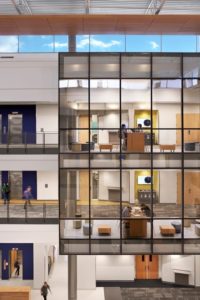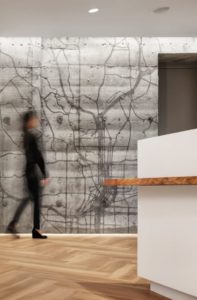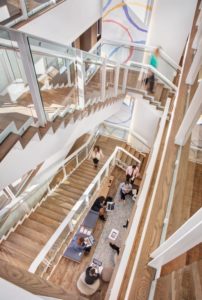Interviews

Experiential, Sustainable Design: The Way of the Future | by Caroline Busch
Founded in 1968, Atlanta-based design firm tvsdesign embodies what it means to be forward-thinking – everything they produce demonstrates a careful consideration of technology, sustainability, and the user experience. To date, the 180-person firm boasts over 300 design awards, 37 LEED certified projects, and services ranging from architecture and interiors to urban design and planning. Notable work includes the expansion of New York City’s Jacob K. Javits Convention Center, the Las Vegas Convention Center expansion, the College Football Hall of Fame, and the Vision Tower in Dubai.
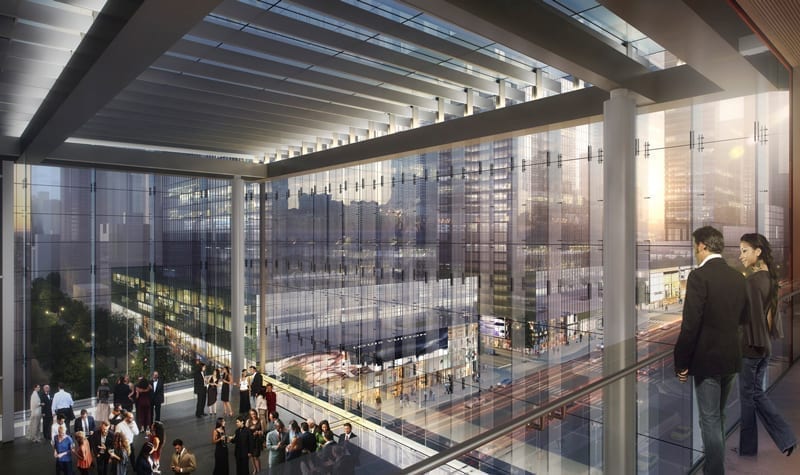
Jacob Javits Convention Center, New York City
We spoke with Donna Childs, a principal at the firm and one of the lead designers of the Mercedes-Benz Stadium in Atlanta, GA. Here, Donna talks about the holistic design approach that secured this project a winning spot in the 2019 Ceramics of Italy Tile Competition, and shares a behind-the-scenes look into tvsdesign’s collaboration process.
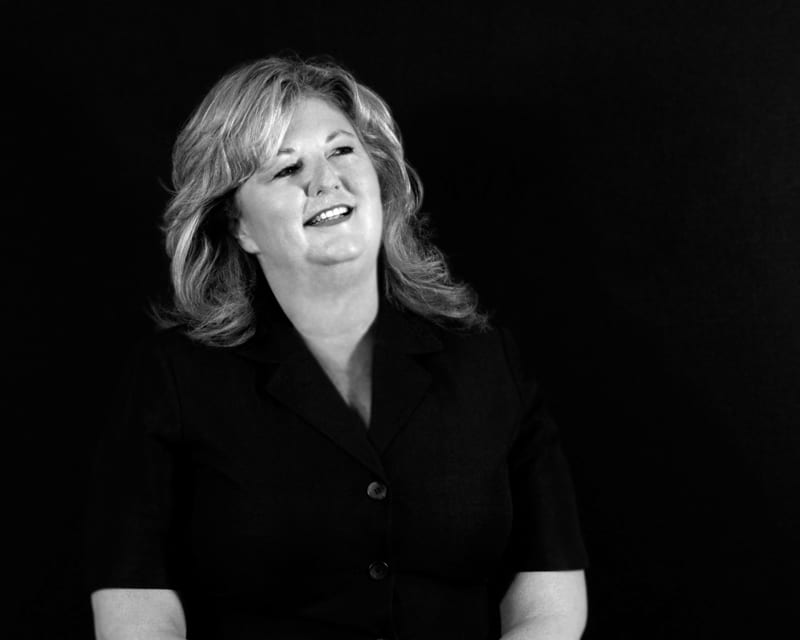 Your firm specializes in the design of large-scale commercial and hospitality spaces. When it comes to working on projects of this size, what are some practices and tools that help you and your team collaborate most efficiently?
Your firm specializes in the design of large-scale commercial and hospitality spaces. When it comes to working on projects of this size, what are some practices and tools that help you and your team collaborate most efficiently?
The first thing we do is meet with our client and all the major stakeholders involved in the project. This is usually an all-day affair, and it allows everyone to express and share ideas freely. At the end of the day, a shared vision is established and everyone feels like they have authorship over the design.
We also divide and conquer, splitting up the various areas of a project and coming together often to exchange thoughts and information. Sitting together in an open office environment allows us to easily use each other as a sounding board and hear conversations. Also, it helps to have everyone together as we create and build finish palettes and materials.
Keeping the client involved with regular meetings and through technology is key. Not all clients can read drawings, so being able to “walk” them through a model of their space helps them to understand how the space really feels.
What is your personal design philosophy? How does it affect the projects you design for your clients?
What I absolutely love about interior design is the creative design process and the satisfaction I get from helping clients create spaces that reflect what they want to achieve. My design philosophy balances thoughtful space planning, artistic vision and user experience in order to improve the quality of the spaces I design. I also believe that design is a team sport—having the right people on your team that share and expand upon your vision is key to success.
Your project, Mercedes-Benz Stadium in Atlanta, GA, won our 2019 Tile Competition in the Commercial category. Can you walk us through some of the design goals for this project?
Mercedes-Benz Stadium set out to provide an iconic, unparalleled fan experience that would get fans off their sofas and into must-see, photogenic destinations. The client sought to offer 100,000 square feet of private space as hospitality-driven clubs with options that would appeal to a variety of demographics, serve as multifunctional alternative revenue streams, and elevate the guest experience. Specifically, the spaces needed to be awesome for game day and also offer the community swank, tailored event space to throw an office holiday party, host fundraisers, hold weddings and more.
The client presented the designers with a challenge of creating the different clubs as immersive, distinct environments that range from refined and sophisticated elegance to an edgy and industrial loft aesthetic. Additionally, the quality of the intended detail had to be maintained while working in an adaptive environment with construction time constraints. Another challenge was that most of the club spaces are located under the seating bowl: high to very low, very dark, and with lots of movement. Unique to the project, the design team had to work with the many club sponsors as well as the owner to create immersive brand experiences.
Overall, the client was clear that they wanted an iconic building, which set the tone for the entire project inside and out. The designers needed to contribute to a common design goal of reinventing the guest experience as progressive, innovative and contemporary. Focusing on the “guest experience,” the designers employed an overarching hospitality mindset while designing the spaces.
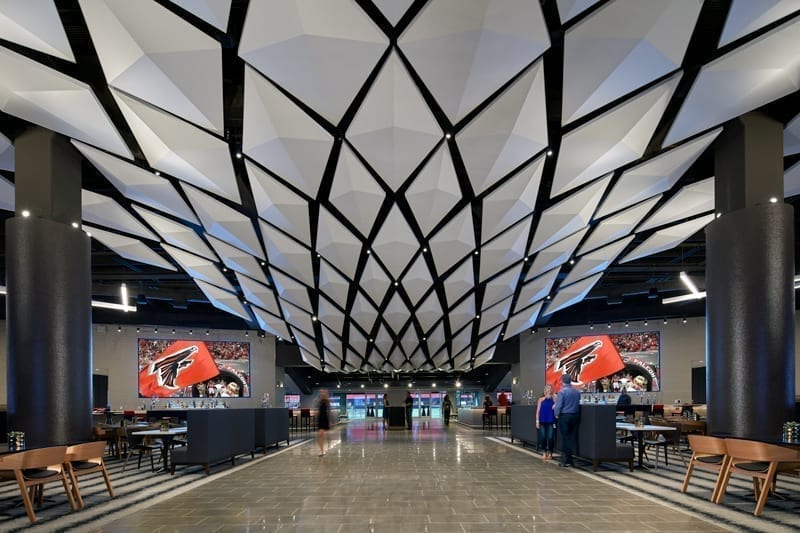
Mercedes-Benz Stadium (photo: Brian Gassel)
How did Italian ceramic tile contribute towards achieving these goals?
Italian tiles are beautiful yet durable, so we were able to easily use them to create these beautiful spaces for a fairly rough crowd. Also, Italian tiles are very stylish, offering a wide assortment of design opportunities. We used Italian tile on bar fronts, wall surfaces and floors, implementing dimensional tiles, large format tiles, as well as glossy and matte tiles throughout.
Your mission statement notes a focus on “solutions that promote health, sustainability and joy.” How are these values reflected in the Mercedes-Benz Stadium project?
As a firm, we create high performance, high impact environments that help individuals, businesses and communities thrive. Ultimately, we want the spaces we design to feel good, and Mercedes-Benz Stadium achieves this across the board. The immersive environments at the stadium enable an elevated experience for guests that span well-beyond game day. The flexibility of the stadium lends itself to wellness programming like “Yoga on the Field,” as well as arts and cultural events at the adjacent Home Depot Backyard. Designed for sustainability, Mercedes-Benz Stadium is the world’s first LEED Platinum building in its category, having earned the highest score ever for a sports venue. All finishes selected had to meet the requirements of this LEED level while still creating a lush, five-star hotel experience.
- Auburn University Mell Classroom Building @ RBD Library (Nick McGinn Photography)
- Cousins Properties (Darris Harris Photography)
- United Way of Greater Atlanta (Darris Harris Photography)
What types of projects are you most excited by?
During the design process, we work very hard and spend countless hours coming up with the best design ideas for our clients. When I am lucky enough to have a team (and this includes owner, contractor, management and design team) that works well together and has fun during the creation process–now that really gets me excited!
As far as the type of projects that I love to design, I am most excited by projects centered around where people choose to spend their free time; where people go to have fun or relax. It’s like being an author of a great book. I can choreograph the guest’s experience from the moment they arrive until they depart, creating amazing unique opportunities along their journey.
February 2020




